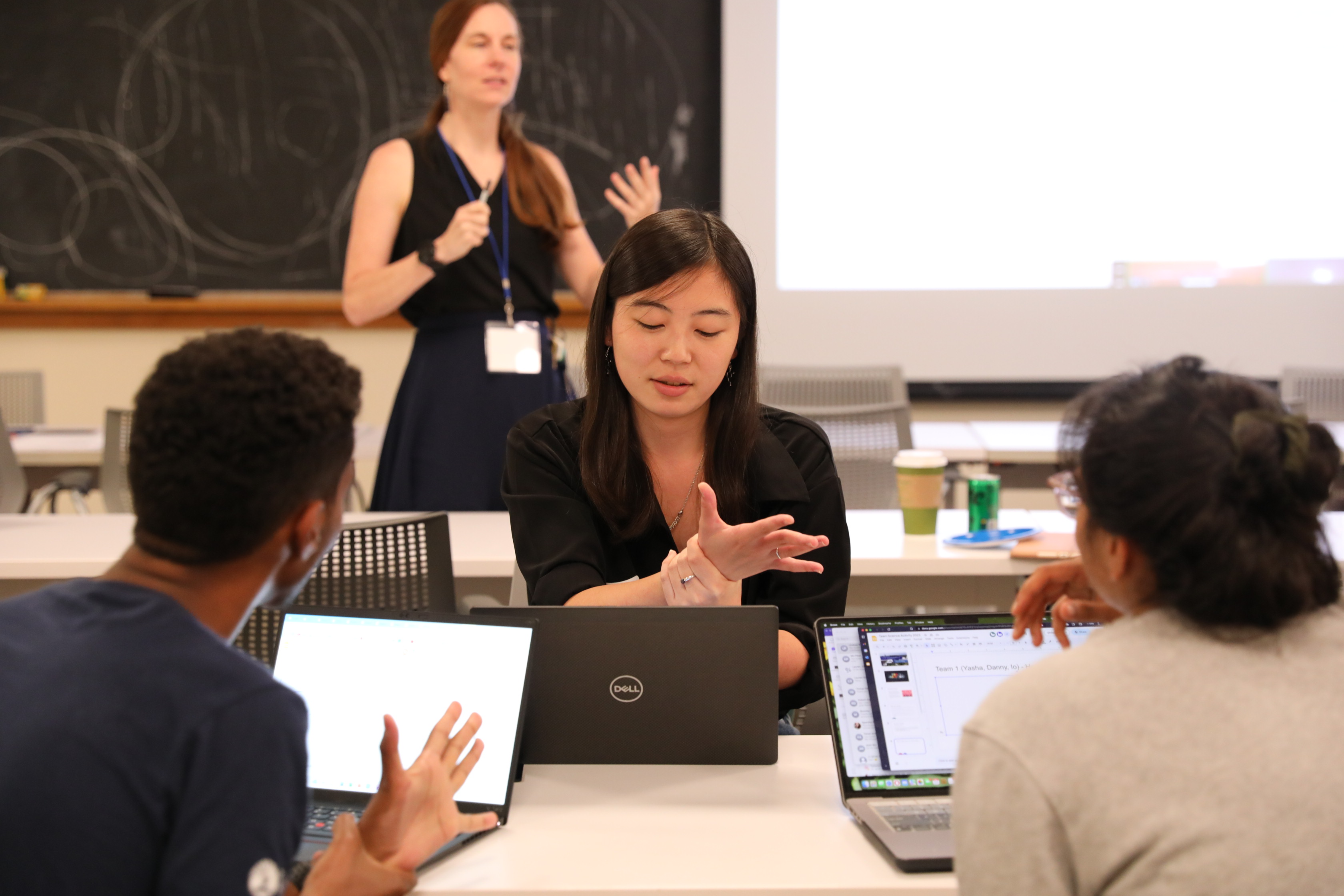Originally from South Korea, materials science and engineering graduate Migon Choi joined laboratory internships where the work was 100% experimental. She had no experience with artificial intelligence (AI) or machine learning (ML). Even so, she decided to take a bold step and pursue a PhD in AI and Materials Science at Duke University.
“Before I joined this program, my only focus was repeating experiments until I got some data that I was satisfied with to publish,” she says. “It was a very narrow focus. After applying ML, I started thinking more broadly. I have all these kinds of data – how can I use this data to optimize my experiments? It’s more forward-thinking and we can streamline our processes.”
Duke has been leaning into this future for years. In 2020, the National Science Foundation awarded the university a US$3 million grant to train graduate students in the use of AI for materials research. That momentum led to new concentrations, certificate programs, and research opportunities. Now, Duke Engineering is taking the next step by launching a Master of Engineering in AI and Materials.
It’s a program designed to prepare you to lead at the intersection of AI and materials science, where breakthroughs in energy, healthcare, aerospace, and more are being shaped. You’ll dive into how AI and materials science come together to solve challenges like clean energy storage or personalized healthcare. It focuses on AI-driven design, giving you the tools to imagine and create technologies of tomorrow. That could mean new energy systems, smarter infrastructure, or medical solutions tailored to individual patients.
Duke University’s Master’s in AI & Materials is shaping the future, equipping graduates to drive innovation in industry, startups, and research. Source: Duke University
Resources are world-class. You’ll work in advanced labs, connect with industry-driven research centres, and learn from faculty who are at the forefront of intelligent materials. The university also provides access to compute cluster, GPUs, and prototyping and testing facilities. Through Duke’s nanotech resource SMiF, you’ll also have access to cleanroom fabrication, imaging, and characterization tools that link researchers from both academia and industry.
What truly sets Duke apart, though, is its culture. It is built on collaboration and support, which makes a big difference when you’re in pioneering fields like AI and materials. “The really good thing about the AI & Materials program is that the community is very supportive,” Choi says. “If you want to learn something or try something, people will help you and find resources for you. People should not feel discouraged if they don’t have a certain ideal background.”
That collaboration mindset continues beyond the classroom. You’ll be part of a community that includes global partners, startups, and a strong alumni network. With that backing, theory is something you can test, build, and launch. The university has many other resources to support initiatives and ideas, whether you’re prototyping, developing software, experimenting, or even starting a company.
“If you want to prototype, there’s the Innovation Co-Lab and the machine shops,” says Han Zhang, a PhD Student in AI & Materials from Canada. “If you need support for a startup idea, there are grants and mini-funds. If you really want to make something special or do something different and augment your program, it’s very doable at Duke. There are people who are happy to help you.”

With a strong foundation in both AI and materials science, students are empowered to drive rapid innovation and shape the future of materials across energy, medicine, and advanced electronics. Source: Duke University
By the time you graduate, you’ll leave Duke with the ability to speak both the language of advanced materials and the fast-moving world of AI. The program is structured to give you a solid foundation in both areas while making sure you have practical experiences that count. That dual fluency stands out, whether you’re aiming for research and development, product design, advanced manufacturing, or something entirely your own.

Duke students and faculty collaborate in-person and virtually. Here student Han Zhang (R) explores Neural Operator coding for metamaterials in real-time with Dr. Cate Brinson (L), Dr. Johann Guilleminot and external colleague. Source: Duke University
“I have learned a whole bunch of technical things, but the biggest thing is being very comfortable with the math and having the intuition for architectures and performances,” Zhang says. “Give me a set of training data and an architecture, and I’m pretty good at predicting what its performance would be. That’s useful not only for my research, but also for everyday life as AI starts to permeate many things we do.”
What students like Zhang learn at Duke is a mirror of the professional world, in setting as well as in the caliber of people involved. This readies you for your next step: building a meaningful, future-ready career. Alumni have gone on to work at organizations like Apple, IBM, Blue Origin, Eaton, and NIST, as well as startups and national labs. You’re set to follow their lead.
Learn more about the program at Pratt School of Engineering.
Follow Duke Engineering on Facebook, Instagram, YouTube, and LinkedIn










